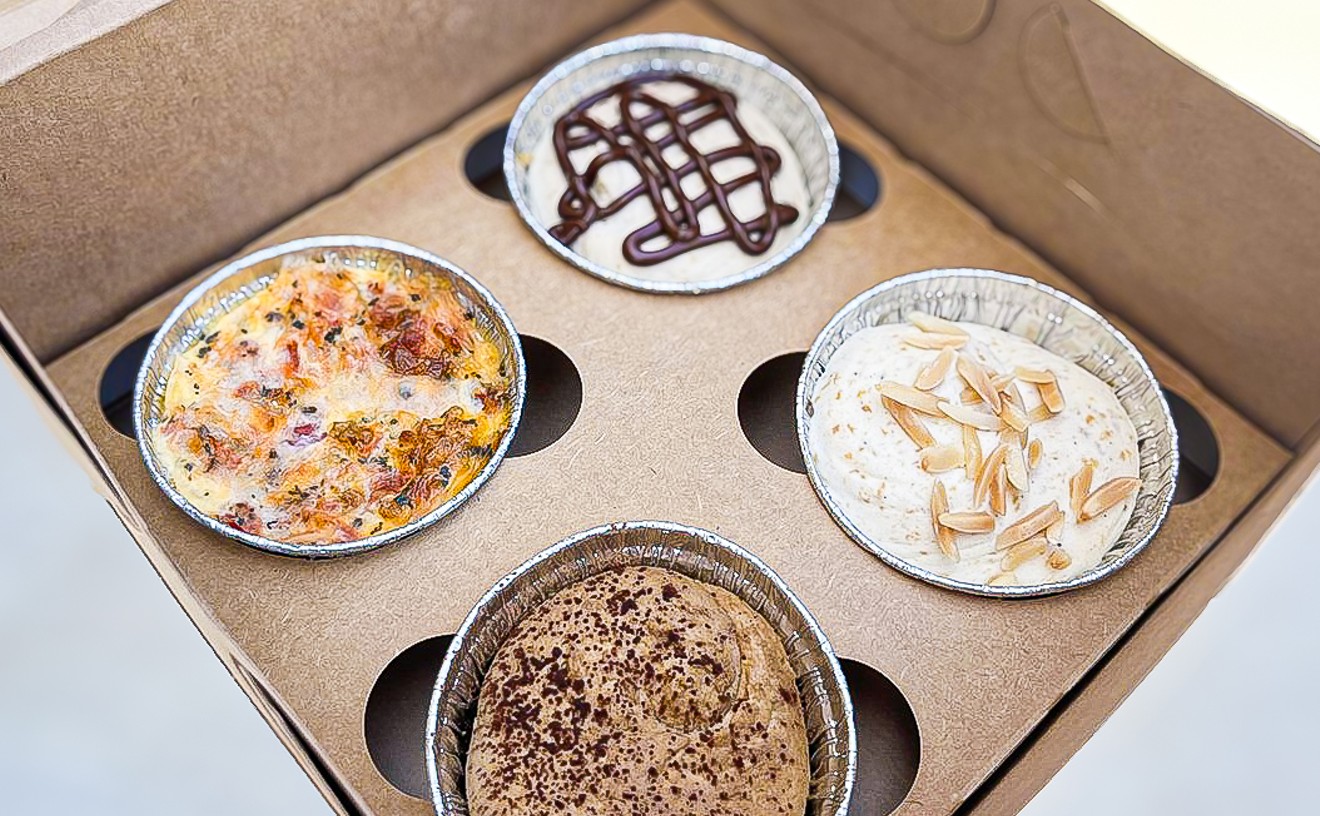"Original Cuban sandwiches come from Ybor City; everything else is just a
sub."
This rather controversial statement comes to us courtesy of Andy Huse,
Assistant Librarian at the University of South Florida, as quoted in Cigar
City Magazine. Immediately, most readers are probably thinking, "Wait a
minute. Aren't Cuban sandwiches from, um, Cuba?"
Well, yes and no. You see, like all things related to cuisine, the Cuban
sandwich has mutated as it has migrated from the mother country. Food
writer Danny Najar notes, "The sandwich we are most familiar with is a
glorious, panini-like bite-full of buttered bread, sliced ham, thin cuts of
pork loin, spicy mustard, gooey Swiss cheese, and salty pickles. This is
the modern-day Miami recipe that we've grown to love."
He goes on to explain that the Cubano as served in Havana is actually called a "sandwich
mixto," and will probably consist of cuts of either pork or ham, the two
meats never sharing the bill on the same sandwich, together with watery
mustard, dismal government bread, and generic, Swiss-like cheese. And good
luck finding pickles! Right. Real Cubans are only served in the States. Got it. So this Ybor City must be a suburb of Miami, correct?
Wrong again. Ybor City is not really a city, it's a neighborhood. And it's not in Miami. It's in Tampa. Confused?
For guidance, I turned to a Web site called What's Cooking America?, where
Linda Stradley has composed an article entitled, not surprisingly," History
of Cuban Sandwich, Cubano Sandwich." She has assembled a timeline that
reveals the tasty treat's history in some detail. For instance, although
the Cuban has been enjoyed in Cuba since the 1500s, the modern Cubano
actually dates to the influx of cigar workers from the mother country to Key
West in the 1870s. Among the first of the large factories erected there was
"El Principe de Gales," owned by Vincente Martinez Ybor. In 1886, the Key
West facility was destroyed by fire, and Ybor accepted an invitation to
relocate to Tampa. Thus, the location in Tampa he chose for his new factory
was dubbed Ybor City.
The original Tampa sandwiches were based on
concoctions created by the newly relocated workers and contained salami as
well as ham and pork. She adds, "From the opening of the first cigar
factory in 1886 until the 1930s, Ybor City was a flourishing Latin community
and was the 'Cigar Capitol of the World.' As a result of severe depressions
in Cuba, thousands of Cuban immigrants, both black and white, came to the
Tampa, Florida area....Somewhere in time, Italian Genoa salami was added to
the Cuban sandwiches of the Tampa area. In the late 1800s, the major ethnic
groups of Ybor City were Cubans and Italians."
By contrast, the majority of Cuban expatriates in Miami fled Cuba after the 1959 Castro revolution, so Miami Cubanos don't typically contain salami. The tasty variety offered at Caribbean Café in Carrollton and Frisco is a Miami-style Cuban, but its rich, savory combination of pork, ham, swiss, dill pickles, and mayo or mustard on grilled French (not Cuban) bread still satisfies. Served with ultra-crispy fries, this sandwich evokes lazy, tropical afternoons spent with tall mango tea or mojito in hand, and is a worthy representation of the mother country's cuisine.
In this case, the
mother country in question is the USA, not an island nation located some
90 miles from South Florida. Remember, a sandwich from anywhere else is
just a sub.










